Zoo Story: The Future
Have an online walk through the past, present and future of the Lisbon Zoological Garden with the Gulbenkian Foundation, which was online before the online event started.
![Map of the original edition “Guia do Turista em Lisboa” (1929) [property of Manuel dos Santos and Ascenção Araujo, Lisbon] modified by the curators with the satellite image of Lisbon (2020).](https://architectuul.com/lib/content/5728_large.jpg)
Map of the original edition “Guia do Turista em Lisboa” (1929) [property of Manuel dos Santos and Ascenção Araujo, Lisbon] modified by the curators with the satellite image of Lisbon (2020).
The project for the Future Architecture Platform 2020 will take you to the Lisbon’s Zoological Garden designed by Raul Lino asking questions like what role is the Zoo expected to fulfill in the contemporary city and what will it be in the future? For more check up online virtual exhibition“Staged Nature: Zoo of zoos” curated by Enrico Porfido and Claudia Sani from País(vi)agem with Arian Lehner and Theresa Margraf from Mies.TV, with whom we had a short talk about it.
—
How do you see the future?
Enrico Porfido: Do you mean the future of the zoo or the future in general? Because I don’t really see any future coming… In this direction, with such a pessimistic interpretation of the imminent future, it doesn’t make sense to make many plans for the future. But hidden somewhere, there is also an optimistic point of view where, “thanks” to COVID-19, this crisis represents an opportunity to change our way of living, interpreting and reading our realities. During the study and research phase for the exhibition in Gulbenkian Foundation we understood that the Zoo is not only a place where animals are kept, but it is a place where different themes can be discussed. For example, our approach to nature, its valorisation and the relationship with the historical city. It’s not only an issue of animals in a cage, but our anthropocentric approach to reality! If we can start changing it in the zoo, we might be able to change it also outside it, in our everyday life.

The original map of the Lisbon Zoological Garden, designed by Raul Lino at the beginning of XXth century | Source © Archive of Gulbenkian Art Library
How did you develop this project in the time of pandemics?
Arian Lehner: The whole development of this project was very interesting, because we were all apart, in different cities. In the process of creating the exhibition we had a lot of discussions, where we very early understood how to talk about the zoo as an urban piece in the city. One important point which triggered an idea and vision for the future, was the thought of a biologist, who said that the zoo is showing naked animals itself without their natural environment. Such spaces like a zoo might in future show a variety of glimpses into different places of the world, where it won’t necessarily be needed to keep living animals in cages.
Why is then important in the whole environmental context?
Arian Lehner: A zoo can transform into a condition of heterotopia which creates different worlds inside it. Animals will be linked to their environments to understand what is relevant to survive. It is a glimpse into the world, within your own city so you don’t have to travel around the world to understand other ecosystems.
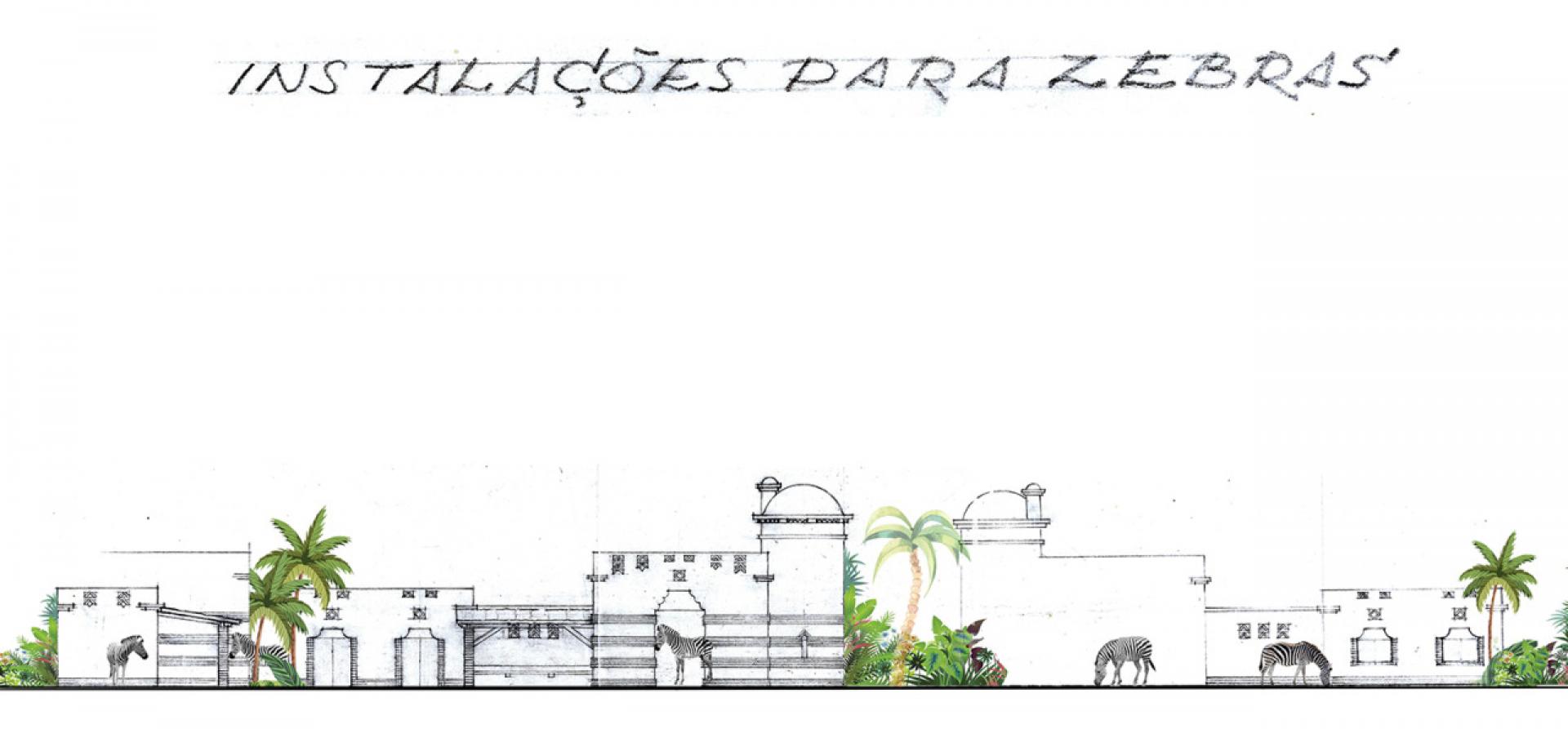
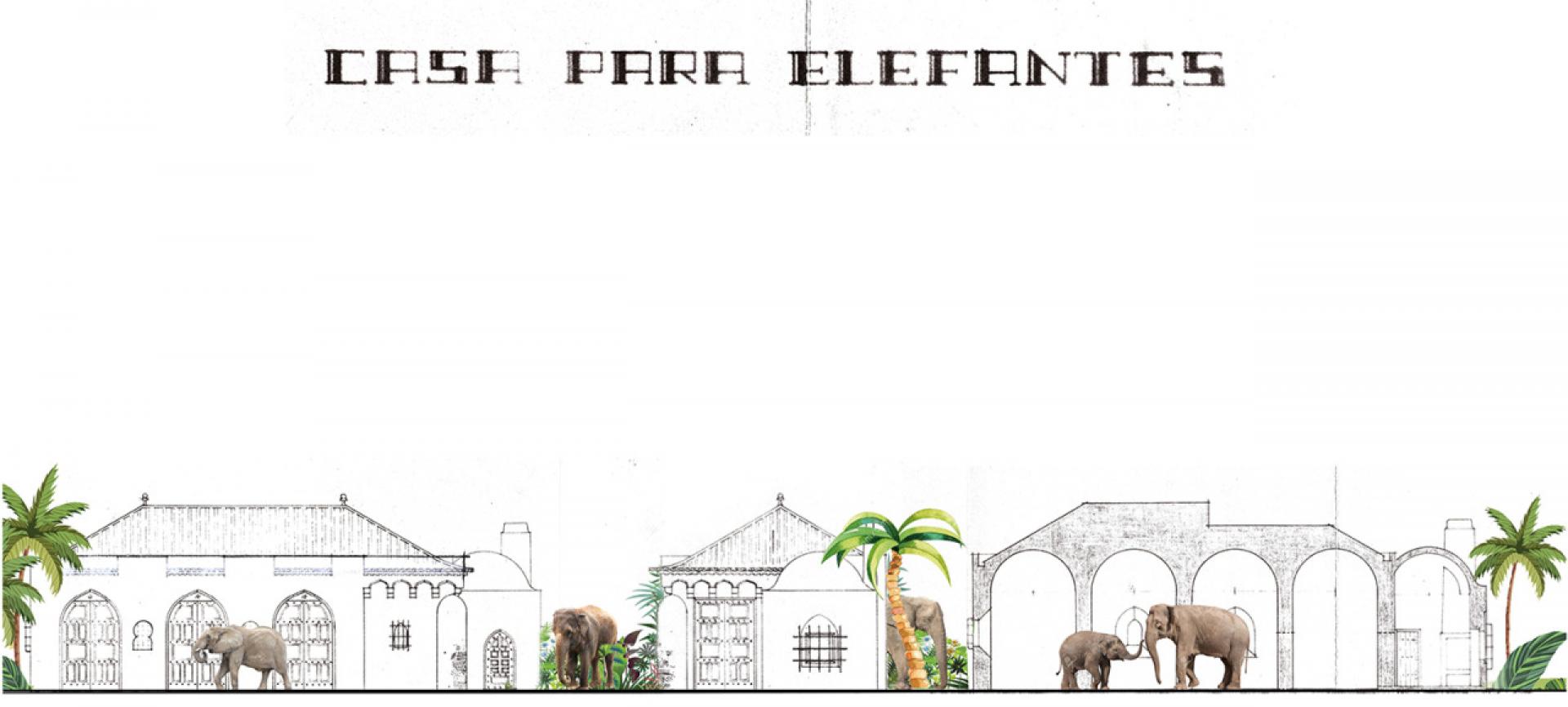

Zebra, elephant and giraffe pavilion house designed by Raul Lino. | Source © Archive of Gulbenkian Art Library
You used different media for dissemination of the project, could you explain more?
Enrico Porfido: More than innovative, I would rather say that we were complementary. We are two groups that cover different dissemination channels and networks. AtPais(vi)agem we are more traditional-academic, while Mies. TV has a more digital approach. I think it worked well because we mixed those two worlds!The main idea was to enlarge the public audience of the Gulbenkian Foundation’s archive within sharing their drawings via digital tools. So, we decided to drop an old-fashioned-paper archive in a contemporary digital media! This goes in the direction that the Gulbenkian Foundation took even before COVID. Indeed, they already had in mind those virtual exhibitions as instruments for making their archives accessible to as many people as possible.
Which types of media did you use?
Arian Lehner: Because of the huge variety of new media, we did not fear of putting theoretical architecture-content in this new digital field. If you can buy shoes on Instagram, why can’t we use the same platforms for academic discourse as well? Our goal was to bring the content of Pais(vi)agem to as many people as possible in an understandable way. The exhibition consists of short and long texts, short and long videos, animations, sounds in order to make it understandable. Our exhibition is not closed but it’s a kind of open source, where you can learn and link to many other sites. Such as the cooperation with postcards by Modern in Belgrade.

Postcard from Belgrade: “Belgrade Zoo’s Ark: A Voyage to the Great War Island" designed by Hristina Stojanović, Modern in Belgrade.
The cooperation with BINA - Belgrade international week of architecture?
Enrico Porfido: The collaboration with BINA was a nice experience, although we couldn’t develop it as much as we planned due to COVID restrictions. During the digital talk in September, we compared the zoo situation between Belgrade and Lisbon with local experts and this was really inspiring. And it also ended up in an ephemeral collaboration with the collective Modern in Belgrade, that supported our project sending some “postcards” from the Belgrade’s zoo.
Creating an open-source exhibition?
Arian Lehner: This is a process of democratisation of information. We created a digital exhibition that doesn’t translate everything into representation through worlds or images drafted by the curators. What we have is live interviews with experts in the zoo, we didn’t do any representation or transcripts but left the video without the filter so you can listen directly to the experts themselves.
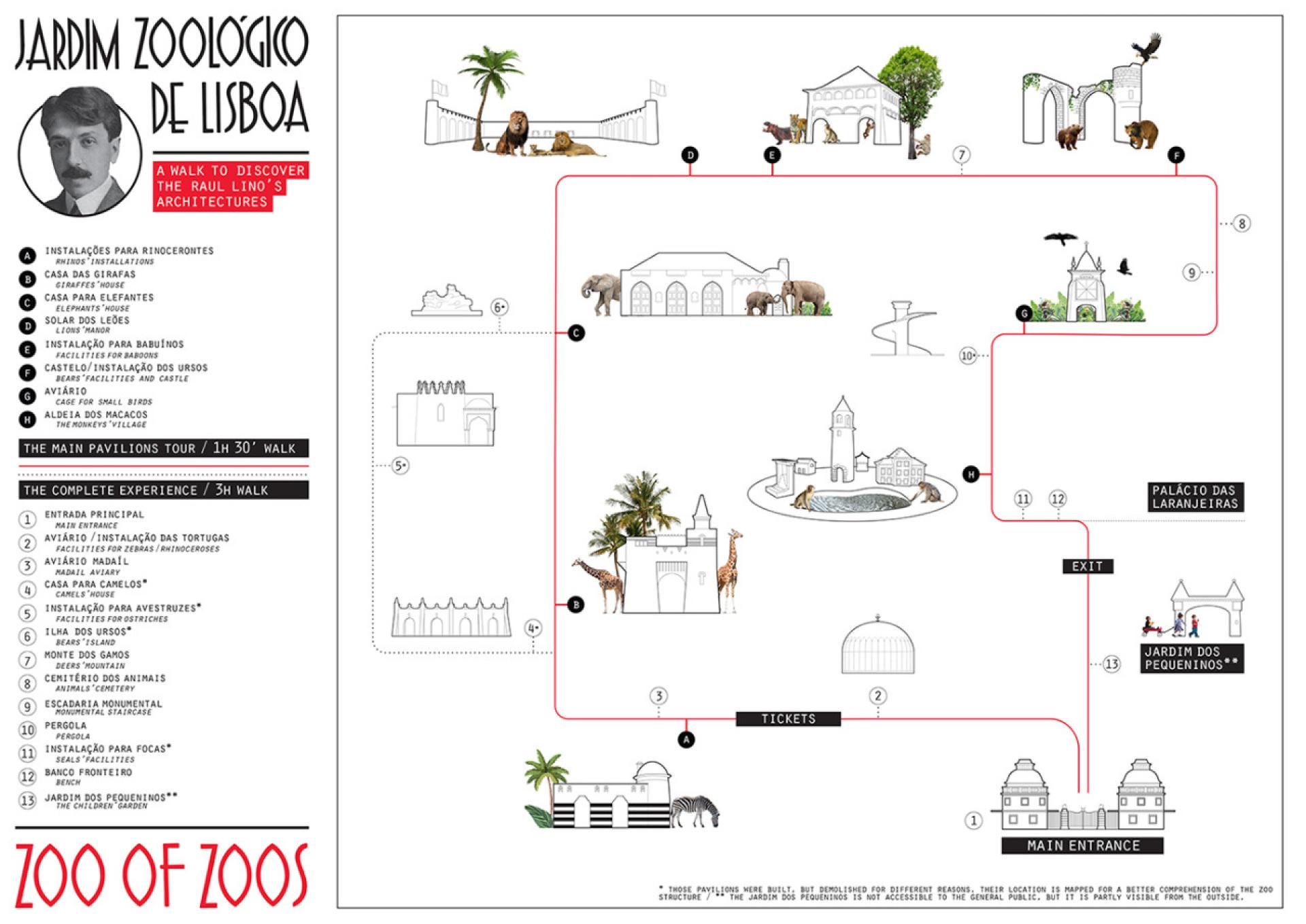
Map "A walk to discover Raul Lino’s architecture in the Lisbon Zoological Garden” designed by the exhibition curatorial team
An amazing change of discourse and presentation coming from an institution like Gulbenkian; what did Future architecture bring to you?
Enrico Porfido: From our experiences, there are many new synergies coming out from this adventure. During the Future Architecture fellowship, we started to build new connections and to consolidate our network. This platform has this big added-value of generating interesting synergies. In our small collective, we decided that there is no more time to work for somebody else or being employed for somebody that you don’t want to work for. We decided it’s time to do something different, because we have limited time to express ourselves. We are aware of what our generation of architects is doing today and which are our opportunities to raise our voice without being arrogant.
Arian Lehner: This current fear or the future has a global dynamic. It is not restricted to one nation alone, but the entire planet is facing challenges. Future Architecture Platform is some kind of global dynamic too – obviously a positive one – which is very important because we work within a transnational network and dissemination of information and knowledge.
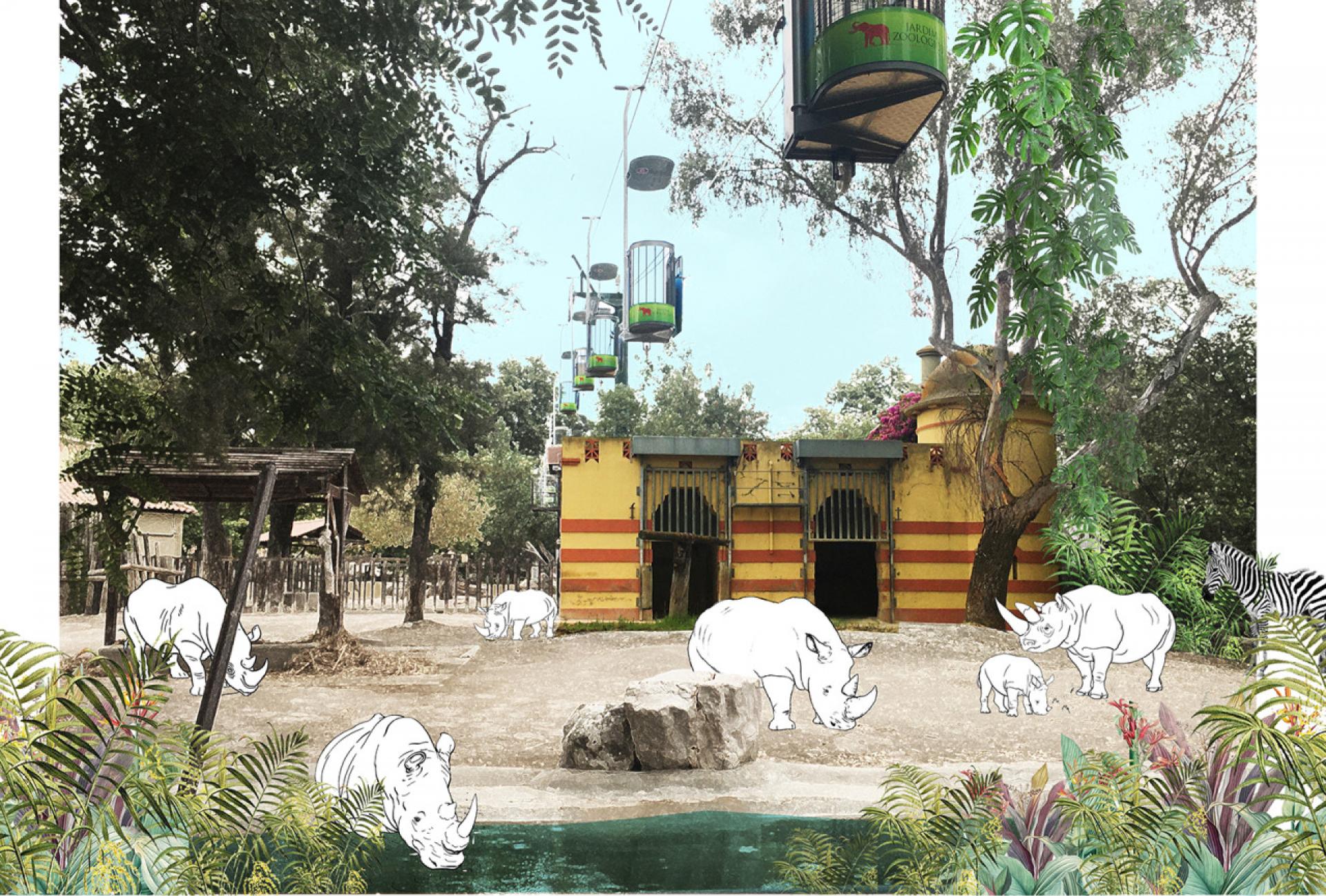
The Rhinoceros’ pavilion | Photo, illustration by the exhibition curatorial team
What would you say about the future after this talk Enrico?
Enrico Porfido: That we have a long way to go! Especially for making people understand that architects do not only design houses. Architects are not just builders! Our superpower is to read reality and territories. There are many tools that we can use, in such a way architects can work as coordinators. We can gather and guide different experts from biology, ecology, anthropology, history, etc. because we can understand the territorial dynamics and coordinate different expertises. Territories have different scales within themselves and architects have the sensibility to understand, observe and work within them.
Is this something connected to a generation?
Enrico Porfido: I guess it’s the approach we have to reality. The oldest architects’ generation would probably answer this question in the same way of how they work – alone.This is why we had so many names, the archistars of the recent past and present. But there are not 30yo archistars, why?
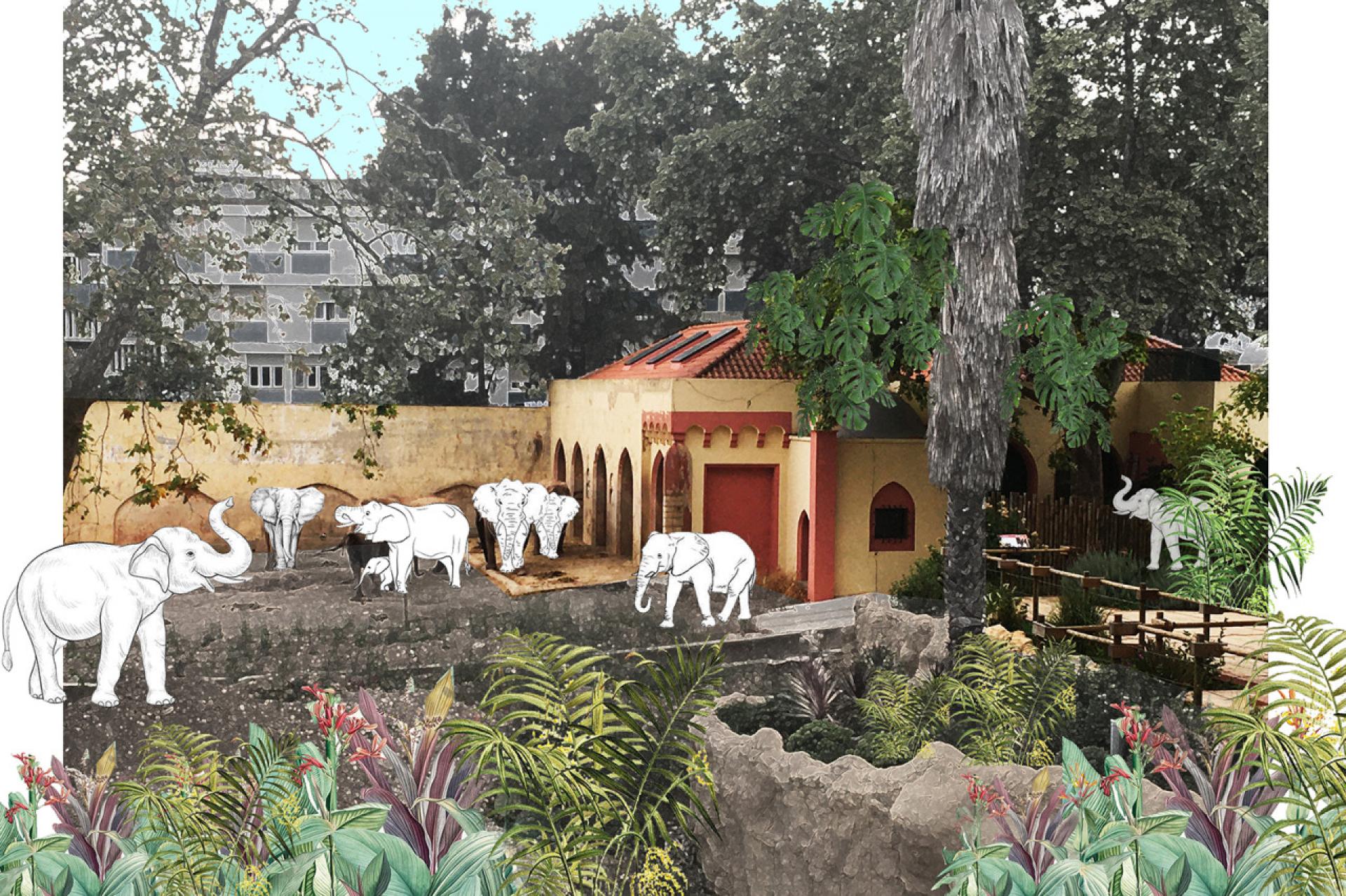
The Elephants’ pavilion | Photo, illustration by the exhibition curatorial team
How could we develop tourism so that it could work as a creator of new destinations?
Enrico Porfido: We can change the way of planning tourism but there is one thing that we all need to understand:we are all tourists at somebody else’s place. You don’t like to hear chatting in the bar under your place, but how is it when you visit another city? I don’t think you care much about the residents.I am obviously generalizing, but here in Barcelona we see the tourist issue as a really strong problem. I can agree that the massive tourism brings along some negative aspects, but we all need to learn how to cohabit. We need to be more tolerant as residents and more educated as tourists. We need to find new models for tourism. I have no clear idea how we should plan the tourism of the future, but I guess people will start to travel more for knowledge and for experiencing the reality of a specific place. Tourism is a social phenomenon, so when the society “goes massive” also tourism does it.
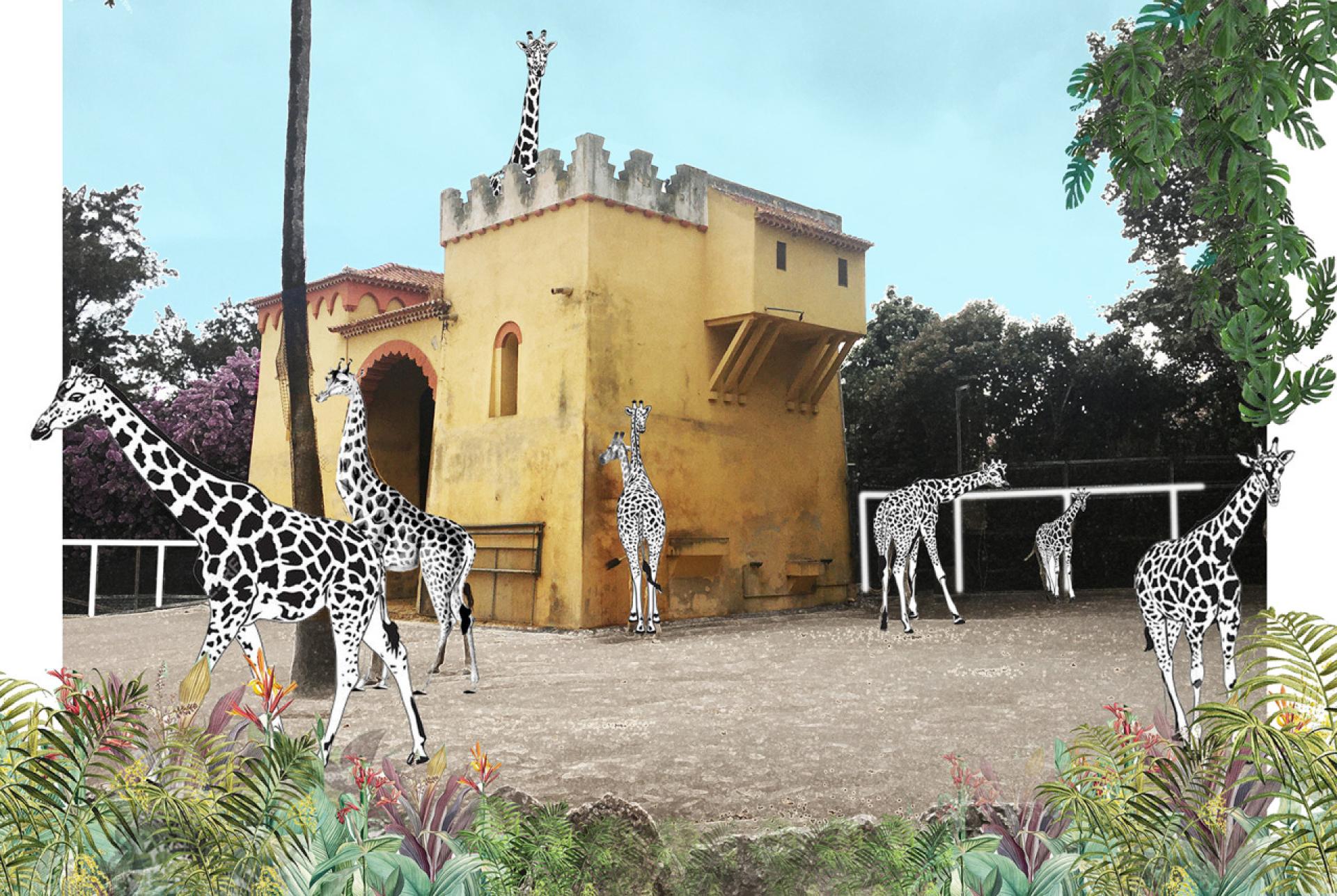
The Giraffes’ house | Photo and illustration by the exhibition curatorial team
Arian Lehner: Psychologically speaking: I travel to somewhere far away because I want to experience different smells, sounds and newspaces. This uniqueness makes travelling attractive, rather than staying at home in the monotony of one’s own life. The important part of visiting places is that you are “only visiting” and many places you just want to see but not live there for the rest of your life. It’s really like a refreshment and before coming back to your monotonous life, which is also safe. Are there different ways though that can create the same effect of travelling somewhere else, diving in a completely different world, place, space? Maybe this could in future be visiting your local zoo because everything will look different, because of different elements that this place is composed of, maybe it is a techno park with different robots. In this way you don’t need to fly away somewhere else to be yet again in a city that has the same Starbucks, the same looking Airbnb – but you can have a different psychologically effect like visiting a different place. That is an interesting challenge.
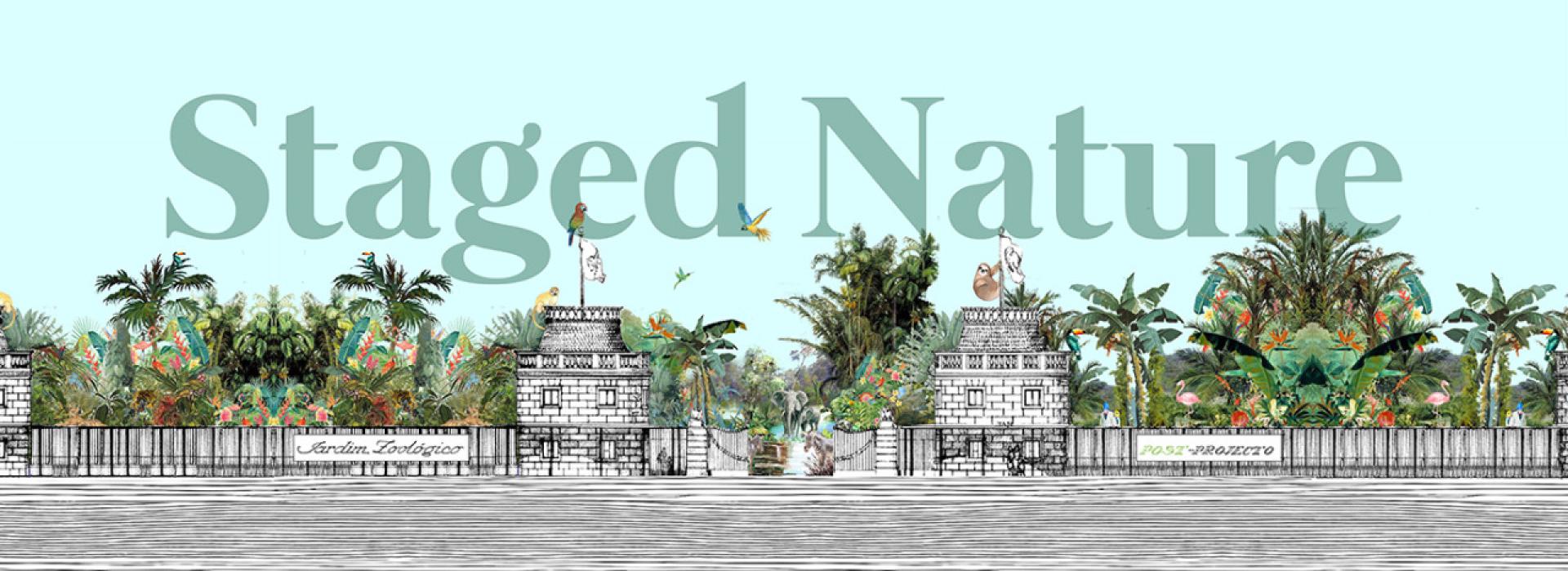
Staged Nature: Zoo of zoos: A walk through the past, present and future of the Lisbon Zoological Garden, Gulbenkian Foundation via Future Architecture Platform, 2020 (illustration exhibition curatorial team)
País(vi)agem is an independent research group, which aims to investigate the relation between tourism, landscapes and local communities, co-founded by Enrico Porfido and Claudia Sani in 2015. Enrico is based in Barcelona and working as researcher and freelance consultant on tourism and strategic planning. Claudia became a project manager in the office Urban Act in France, dealing with urban ecology and social district regeneration. In 2020 Elisa Brunelli joined the members’ board.
Mies.TV is a documentation and investigation platform with the goal to initiate discussion on the topic, resolve understanding and reflect on how the role of an architect is changing. The channel has filmed over two hundred interviews ensuring a vast archive of data to enable a thorough and widespread illustration of different standpoints and how these are positioned within a global perspective. Through open screenings, architecture festivals, television shows and panel discussions aims to communicate architecture to an audience internal and external to the realm of architecture with the use of modern tools.